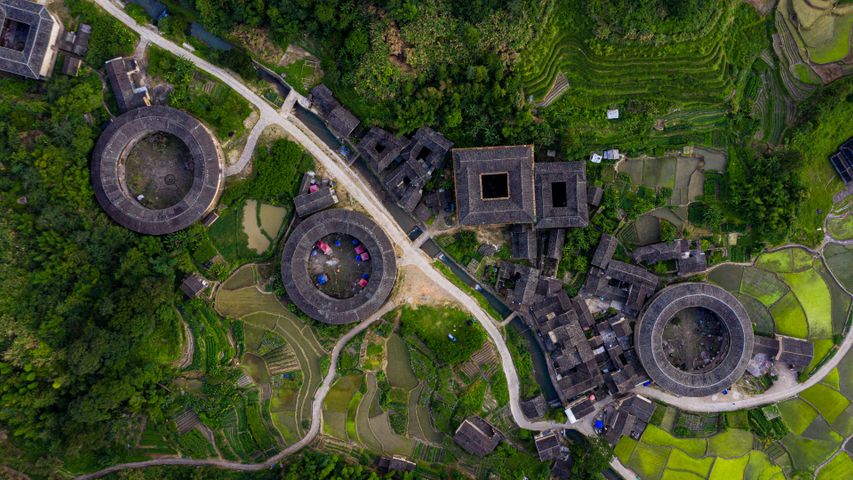Aerial view of Santorini, Greece
© Amazing Aerial Agency/Offse
Santorini through the clouds
With its romantic sunsets, dazzling ocean views, and whitewashed buildings clinging to rocky clifftops, the Greek island of Santorini (aka Thera or Thira) is the very picture of an idyll in the Aegean. But this tranquil scene belies the island's explosive geologic history, for this is the site of one of the largest volcanic eruptions in recorded history. The Minoan eruption, about 3,600 years ago, caused the center of the Thera volcano to collapse into the ocean, leaving Santorini a jagged, crescent-shaped moon atop the sea.
The impact of the eruption was more than just geologic—when the volcano blew its top, Santorini was home to a thriving outpost of the Minoan civilization. A farming and fishing community had been established at Akrotiri on the island around 7,000 years ago, and by the time of the eruption had developed into a prosperous city built largely on trade with other cultures of the Aegean. Akrotiri had paved streets, delicate pottery, a drainage system, and multistory buildings decorated in elaborate frescoes. Akrotiri's fortunes ended abruptly, however, with the Minoan eruption, which completely buried the city in pumice and ash. Extensive archaeological excavations began in 1967, revealing artifacts that were remarkably well preserved by the volcanic material; particularly notable were the elegant, colorful frescoes. It seems Santorini has always been a site for the beautiful things in life.
Related Images
Bing Today Images



 Wolfe Creek Crater, Australia
Wolfe Creek Crater, Australia
 Vila Franca Islet, São Miguel Island, Azores, Portugal
Vila Franca Islet, São Miguel Island, Azores, Portugal
 The beach at Cala Luna, Sardinia, Italy
The beach at Cala Luna, Sardinia, Italy
 Tea garden at Yangjiatang Village, Songyang County, China
Tea garden at Yangjiatang Village, Songyang County, China
 Great Blue Hole, Belize
Great Blue Hole, Belize
 Aerial view of the Grand Canal and the Basilica di Santa Maria della Salute, Venice, Italy
Aerial view of the Grand Canal and the Basilica di Santa Maria della Salute, Venice, Italy
 Aerial view of an intersection in Dhaka, Bangladesh
Aerial view of an intersection in Dhaka, Bangladesh
 Fujian Tulou complex of historical and cultural heritage buildings in Fujian province, China
Fujian Tulou complex of historical and cultural heritage buildings in Fujian province, China



